#phonegap app developer
Explore tagged Tumblr posts
Text
Efficient PhoneGap App Development Solutions | Passionate Futurist
Passionate Futurist provides efficient PhoneGap app development solutions, creating robust and user-friendly cross-platform mobile applications. Their experienced developers deliver apps that meet client requirements. Trust Passionate Futurist for effective PhoneGap app development services.

0 notes
Text

Experience the power of seamless integration with IONIC app development! Our expert team ensures your app provides a superior user experience across all platforms. Let's build something amazing together! 🔗Learn more: https://greyspacecomputing.com/ionic-mobile-app-development-services/ 📧 Visit: https://greyspacecomputing.com/portfolio/
#IONIC#GreySpaceComputing#CrossPlatform#MobileApp#AppDevelopment#ionicframework#webdevelopment#IONICIntegration#mobileapps#UserExperience#apps#PerformanceBoost#appdevelopment#apppresser#appbuilding#customapps#plugins#ecommerce#iosapps#androidapps#developers#wordpressdevelopers#phonegap#pushnotifications#wordpressmobileapp#iosappdev#androidappdev#wordpressmobileapps#ionic#android
1 note
·
View note
Text
#flutter app development#phonegap app development#reactnativeappdevelopmentcompany#mobile app development
0 notes
Text

Revolutionize your mobile app experience with Panoramic Infotech's expert PhoneGap development services. Get cross-platform solutions today!
For more information:- https://www.panoramicinfotech.com/phonegap-app-development/
#phonegap app development#phoneGap development service#PhoneGap app developers#phoneGap application development#phoneGap application development services#custom android app development#phoneGap CRM app development
0 notes
Text
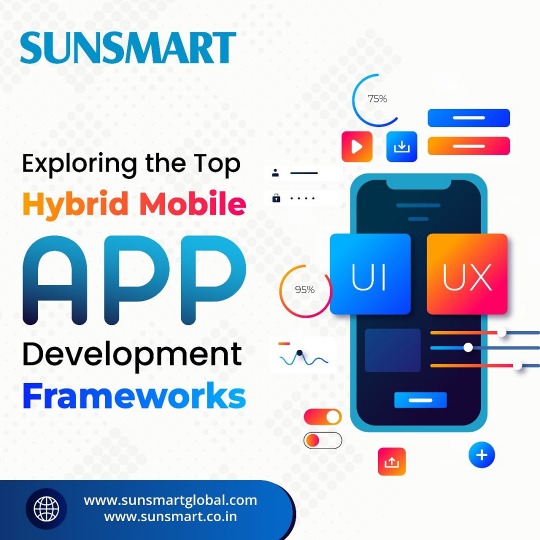
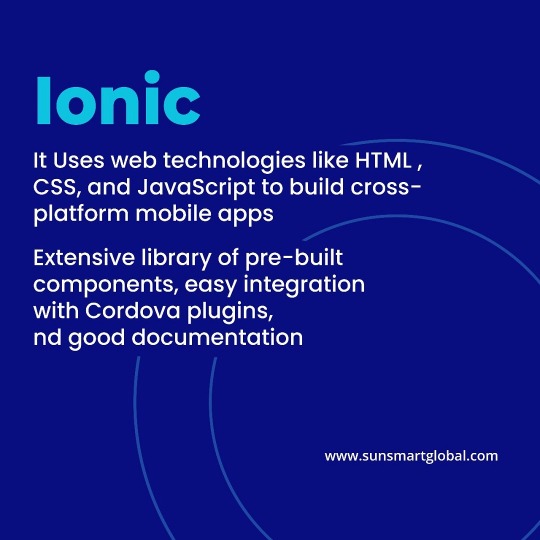
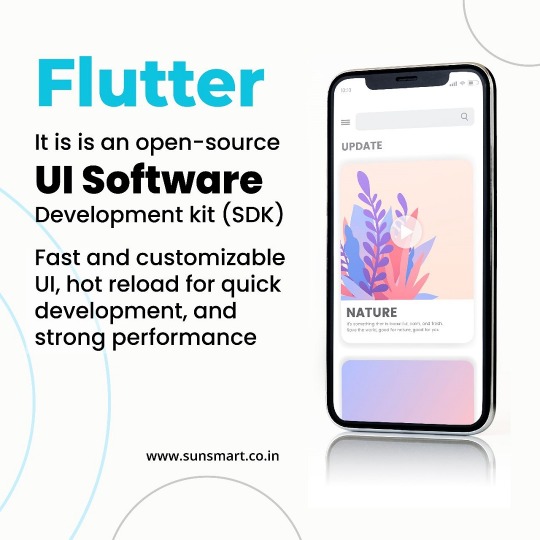
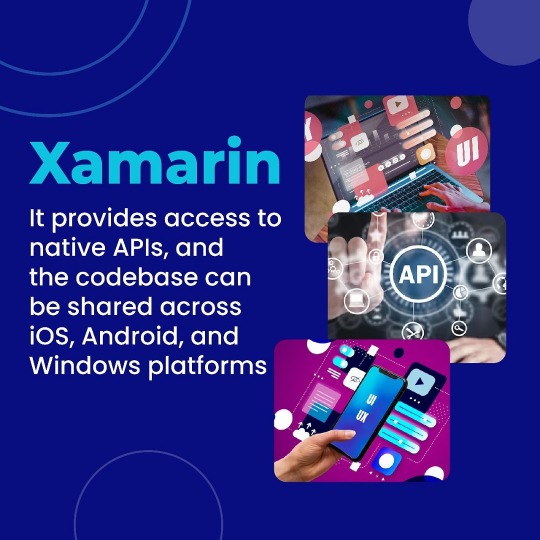
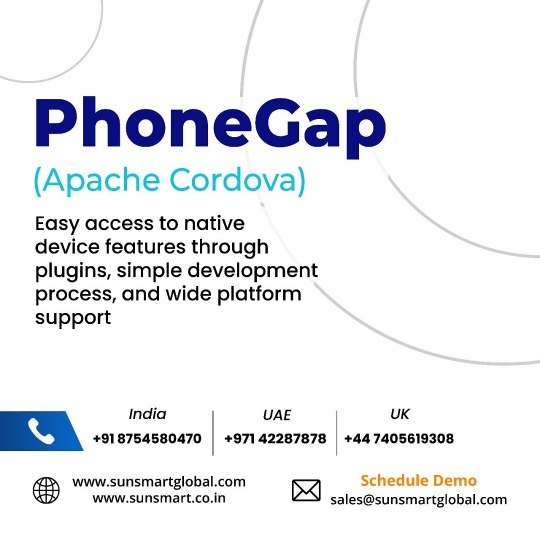
#hybrid app development#mobile app development#android#ios#flutter#ionic#xamain#phonegap#software development
0 notes
Text

Navigating the Complex World of Mobile App Development
In today’s tech-driven world, mobile apps have become a cornerstone of how we connect, work, and play. Whether you’re launching a startup or enhancing an established business, building a mobile app can be a game-changing move. One of the most important decisions you’ll face is choosing the right technology stack. The tech stack you pick will directly influence your app’s performance, scalability, and overall user experience.
What Exactly Is a Tech Stack?
A tech stack is essentially the set of tools, programming languages, and frameworks you use to build your app. For mobile apps, the stack typically consists of three main components:
Front-End: This is what users see and interact with — the app’s interface.
Back-End: This is the engine under the hood — handling data storage, processing, and integrations.
Platform: The operating system your app is built for, like iOS, Android, or both.
Key Considerations When Picking a Tech Stack
Let’s dive into the options and what you should think about when deciding which tools to use.
Platform Options
Native Development
Languages:
iOS: Swift or Objective-C
Android: Kotlin or Java
Pros:
Best-in-class performance.
Full access to device features like cameras, sensors, and GPS.
Cons:
Higher costs.
Longer development time if building for both iOS and Android.
2. Cross-Platform Development
Frameworks:
React Native (JavaScript and React)
Flutter (Dart)
Xamarin (C#)
Pros:
Faster development.
Reusable code for both iOS and Android.
Generally lower costs.
Cons:
Slightly lower performance compared to native apps.
Limited access to some advanced native features.
3. Hybrid Development
Tools:
Ionic (HTML, CSS, JavaScript)
PhoneGap/Cordova (HTML, CSS, JavaScript)
Pros:
Easy to learn and work with if you’re familiar with web development.
Leverages standard web technologies.
Cons:
Performance is not as strong as native or well-optimized cross-platform apps.
User experience can feel less “native.”
How to Make the Best Choice for Your App
Your decision will depend on several factors. Here are some key points to consider:
App Complexity:
For simple apps, cross-platform frameworks like React Native or Flutter are great choices.
For feature-heavy or complex apps, native development might be the way to go.
Time to Market:
If you’re on a tight schedule, cross-platform tools can speed up the process.
Budget:
Native development can be pricey since you’ll likely need separate teams for iOS and Android.
Cross-platform and hybrid options are usually more cost-effective.
Performance Needs:
Native apps deliver the best performance, but modern cross-platform frameworks have come a long way and can handle most needs efficiently.
Team Expertise:
Leverage the skills your team already has. If they’re experienced in JavaScript, for example, React Native might be a natural fit.
Final Thoughts
Choosing the right tech stack is a pivotal step in mobile app development. It’s about finding the perfect balance between your project’s requirements, your budget, and your team’s expertise. By weighing factors like app complexity, performance, and cost, you can make a well-informed choice that sets your app up for success. Remember, a solid tech stack is the foundation of a scalable, user-friendly, and high-quality app.
#mobile app development#android development#ios development#hybrid app development#cross platform app development#technology#software development#programming
2 notes
·
View notes
Text
Top Mobile App Development Frameworks in 2023 - Lode Emmanuel Palle
As of my last knowledge update in September 2021, I can provide information about some of the popular mobile app development frameworks up to that point. However, please note that the landscape of technology can change rapidly, and new frameworks may have emerged or gained popularity since then. Here are some of the well-known mobile app development frameworks mentioned by Lode Emmanuel Palle that were popular up to 2021:
React Native: Developed by Facebook, React Native is a widely used open-source framework for building cross-platform mobile apps. It allows developers to use JavaScript to create native-like user interfaces for both iOS and Android.
Flutter: Created by Google, Flutter is another popular open-source framework for building cross-platform apps. It uses the Dart programming language and provides a rich set of customizable widgets, enabling high-quality and performant user interfaces.
Xamarin: Owned by Microsoft, Xamarin allows developers to build native apps for iOS, Android, and Windows using a single codebase in C#. It provides a way to share a significant portion of code across platforms while still delivering native user experiences.
Ionic: Built on top of Angular and using web technologies like HTML, CSS, and JavaScript/TypeScript, Ionic is a framework for building cross-platform mobile apps with a native-like feel. It also provides a suite of UI components.
Vue Native: Based on Vue.js, Vue Native lets developers build mobile apps using Vue's declarative syntax. It's designed to be similar to React Native, making it easy for developers familiar with Vue.js to transition to mobile development.
PhoneGap / Apache Cordova: PhoneGap is an open-source framework that uses web technologies to build mobile apps that can run on various platforms. It leverages Apache Cordova to access native device features.
SwiftUI (for iOS): Introduced by Apple, SwiftUI is a framework for building user interfaces across all Apple platforms using Swift programming language. It's mainly focused on iOS, macOS, watchOS, and tvOS app development.
Kotlin Multiplatform Mobile (KMM): Developed by JetBrains, KMM is a relatively new framework that aims to allow developers to share code between Android and iOS apps using Kotlin. It's designed for more seamless cross-platform development.
NativeScript: NativeScript enables building native apps using JavaScript, TypeScript, or Angular. It provides access to native APIs and components, offering a truly native experience.
According to Lode Emmanuel Palle. the choice of a mobile app development framework depends on various factors including your familiarity with the programming language, the complexity of the app, the desired platform(s), and the specific features you need. It's always a good idea to research and stay updated on the latest developments in the field to make informed decisions.
9 notes
·
View notes
Text
What is HTML5 and its uses?
HTML5 is the latest version of HTML, which is the standard markup language for creating web pages. HTML5 was released in 2014 and has since become the most widely used version of HTML. HTML5 includes many new features and improvements over previous versions of HTML.
New Features in HTML5
Here are some of the new features in HTML5:
Semantic elements: HTML5 includes new semantic elements such as <header>, <footer>, <nav>, and <article>. These elements provide more meaning to the content of a web page, making it easier for search engines to index and understand the content.
Multimedia support: HTML5 includes built-in support for multimedia elements such as <video> and <audio>. This makes it easier to embed videos and audio files into web pages without requiring third-party plugins such as Adobe Flash.
Form validation: HTML5 includes new form validation features that allow developers to validate user input without requiring JavaScript. This makes it easier to create forms that are more user-friendly and accessible.
Canvas: HTML5 includes a new element called <canvas>, which allows developers to create dynamic graphics and animations using JavaScript.
Uses of HTML5
HTML5 is used for creating a wide range of web applications and websites. Here are some examples:
Responsive web design: HTML5 provides many features that make it easier to create responsive web designs that work well on different devices such as desktops, tablets, and smartphones.
Mobile apps: HTML5 can be used to create mobile apps that run on different platforms such as iOS, Android, and Windows Phone. This is done using frameworks such as Apache Cordova or PhoneGap.
Games: HTML5 can be used to create games that run in a web browser without requiring any plugins. This is done using frameworks such as Phaser or PixiJS.
Web applications: HTML5 can be used to create web applications that run entirely in a web browser without requiring any server-side processing. This is done using frameworks such as AngularJS or React.
Here are some resources that can help you learn HTML:
W3Schools: W3Schools is a popular online learning platform that offers free HTML tutorials. Their tutorials are designed for beginners and cover everything from the basics to advanced topics .
MDN Web Docs: MDN Web Docs is another great resource for learning HTML. They offer comprehensive HTML tutorials that cover everything from the basics to advanced topics .
e-Tuitions: e-Tuitions offers online classes for HTML coding. You can visit their website at e-Tuitions to book a free demo class.
Codecademy: Codecademy is an online learning platform that offers interactive HTML courses. Their courses are designed for beginners and cover everything from the basics to advanced topics .
In conclusion, HTML5 is the latest version of HTML and includes many new features and improvements over previous versions. It is widely used for creating web applications and websites, including responsive designs, mobile apps, games, and web applications.
2 notes
·
View notes
Text
Which App Best for your Requirement Native or Hybrid

To do business is to keep pace with the recent times you need a proper marketing plan. Proper marketing helps to growth of your business. In present marketing scenario mobile app is necessity for every brand with a website. However, there is more to it than meets the eye. You cannot expect your mobile app to get in more subscribers or drive sales if it does not measure up to some of the hottest trends in this field. It is not enough that you have a mobile app for your business. You need to have one that related with the trend and for the trendy app you should consult with expert individual or a leading App Development Company in Bangalore like Idiosys Tech.
The moment you consider investing in a mobile app, you're immediately faced different terminology. What's the difference between iOS and Android? What are native and hybrid? More importantly, which is most suitable for you? If you're confused with those question, don't worry, this article will help you decide your mobile app strategy.
If you want to create an awesome user experience, then native app approach would be better. However, this doesn't mean that the user experience of a hybrid app is bad. A good front-end developer in hybrid app development can get close to a native experience. In term of user experience Native app deliver better experience than a hybrid app.
If you need to make frequent updates to your app, which means that the user will have to update from the App Store regular basic then you should consider a hybrid app. The biggest advantage of hybrid app development is that unless there is a major change in app functionality, all the content is updated from the web directly. This is one of the reasons that most Banks, News and Media apps in the market are hybrid.
If you want to launch the mobile app quickly to the market with limited resources, it would be wise to go with hybrid app approach, which will help you publish app on multiple platforms in a short time.
If you can divide separate budget for iPhone app development and Android app development resources, and you have liberty of time to take it to the market, then you don't have to worry much, go for native app!
Being a part of a leading mobile app dvelopment company in Bangalore, we help customers with both approaches based on their business goals. We build native and hybrid mobile apps based on the client expectations. we deliver 99% bugfree and market trendy application to our clients.
YOU MAY ALSO READ:
IONIC FRAMEWORK – MOST PREFERABLE FOR HYBRID MOBILE APPS
NEED TO KNOW ABOUT SOME FEATURES OF LATEST OS- OREO
PHONEGAP-PREFERABLE FOR CROSS-PLATFORM MOBILE APP DEVELOPMENT FRAMEWORK
0 notes
Text
Native Development vs Flutter: Which One Should You Choose?

Introduction
Think about creating two distinct houses for two individuals who desire nearly the same look — one for iOS and one for Android. Now, think of creating one intelligent house that converts to both. That's native app development versus Flutter — and it's a choice that defines mobile app project futures.
Today, with the need for speed, cost-effectiveness, and cross-platform compatibility, mobile development frameworks have changed at a very fast pace. Native development, employing platform-specific programming languages such as Swift for iOS and Kotlin for Android, has been the performance and platform integration gold standard for a long time. But Google-backed frameworks such as Flutter are shaking things up by providing a single codebase to develop apps that can run on several platforms.
This blog delves into the age-old debate between native development and Flutter — breaking down their fundamental differences, strengths, and trade-offs. As a developer, product owner, or technology enthusiast, this article will show you which way may be best for your next project and why this decision is more important than ever.
History and Evolution
The journey of mobile app development began with native technologies, tailored for individual platforms. When Apple launched the iPhone in 2007, developers used Objective-C and later Swift to build iOS apps. Around the same time, Android emerged, with apps written in Java, eventually evolving to Kotlin — Google’s preferred language. These platform-specific tools ensured that apps were tightly integrated with the hardware and software ecosystem, delivering high performance and a smooth user experience.
However, as mobile usage exploded, so did the demand for faster, more cost-effective development. Maintaining two separate codebases for iOS and Android became inefficient for many companies, especially startups and product teams with limited resources. This gave rise to cross-platform frameworks like PhoneGap, Xamarin, and React Native, aiming to simplify development. Each had its pros and cons, but they were steps toward a unified development model.
In 2017, Google introduced Flutter, a revolutionary UI toolkit for building natively compiled applications from a single codebase. Unlike earlier frameworks that relied on WebView or JavaScript bridges, Flutter uses the Dart programming language and a custom rendering engine to produce near-native performance. Its “write once, run anywhere” promise, paired with a rich widget library and hot reload feature, quickly made it a favorite among developers.
On the other hand, native development also evolved, with more robust IDEs (Xcode, Android Studio), improved language features (SwiftUI, Jetpack Compose), and better tooling that made building apps faster and more maintainable. Native development is still the go-to for apps requiring tight integration with device hardware, platform-specific UI/UX, or optimal performance.
As of today, both approaches coexist — each serving different needs. Flutter has matured with strong community support and increasing adoption in enterprise-level projects, while native development remains unmatched in terms of stability and platform consistency for complex applications.
The evolution from native-only to modern cross-platform development represents a major shift in how mobile apps are built, driven by the growing demand for efficiency, maintainability, and faster go-to-market strategies.
Problem Statement
As mobile apps continue to dominate the digital space, businesses are under pressure to deliver seamless, feature-rich experiences across multiple platforms — most commonly Android and iOS. But developing apps for both platforms presents a fundamental challenge: balancing performance, development time, and cost.
Traditionally, native development required companies to build two entirely separate applications — one for Android using Kotlin or Java, and another for iOS using Swift or Objective-C. This approach not only demands two separate development teams, but also doubles the effort when it comes to writing features, fixing bugs, running tests, and deploying updates. As a result, project timelines are longer, development costs are higher, and maintaining feature parity across platforms becomes more difficult.
On the flip side, cross-platform solutions like Flutter offer a compelling alternative by enabling a single codebase to serve both platforms. However, this approach is not without its own concerns. Developers often question whether Flutter can match the performance, stability, and native feel of platform-specific apps. Additionally, accessing certain device features or integrating new platform updates can require writing native code anyway, partially defeating the purpose of going cross-platform.
This presents a key dilemma for developers and product owners:
Should they choose native development for its power and precision, or Flutter for its speed and simplicity?
The problem becomes even more significant for startups and mid-sized companies that must deliver high-quality apps with limited time and budget. They must carefully evaluate trade-offs between performance, scalability, and maintainability — a decision that can greatly influence user satisfaction and business success.
Technology Overview
To understand the differences between native development and Flutter, it's important to first break down what each approach involves — from basic concepts to how they function in real-world development workflows.
Native Development: Platform-Specific Precision
Native development means creating mobile apps using the programming languages and tools officially supported by the operating system:

iOS: Developers use Swift (or the older Objective-C) along with Apple’s Xcode IDE. UI is built using UIKit or the more recent SwiftUI.

Android: Developers use Kotlin (or Java) with Android Studio. UI components are managed using XML or Jetpack Compose, Google’s modern UI toolkit.
Each native app is compiled separately for its target platform, ensuring optimal performance and direct access to platform APIs, animations, sensors, and hardware components. The app naturally follows platform-specific UI/UX conventions, giving users a seamless and familiar experience.
Flutter: Cross-Platform Simplicity with Power
Flutter, developed by Google, is a UI framework that enables developers to build apps for Android, iOS, web, desktop, and more — from a single codebase. Flutter apps are written in Dart, a fast, modern language designed for UI development.

At its core, Flutter does not rely on native UI components. Instead, it uses its own rendering engine (Skia) to paint every pixel on the screen, which allows for:
Full control over UI customization
Consistent design across platforms
Smooth animations and transitions
Flutter’s “hot reload” feature speeds up development by allowing developers to see changes in real time without restarting the app. It also comes with a rich set of pre-built widgets that can be styled and extended, giving teams the flexibility to build complex UIs efficiently.
Integration and Functionality
For platform-specific functionality like camera access, biometrics, or Bluetooth, Flutter uses “platform channels” — a bridge that lets Dart code communicate with native code (Swift/Kotlin). This ensures that Flutter apps can still use native capabilities when needed, albeit with some added complexity.
On the other hand, native apps have first-class access to system APIs, and they typically benefit from earlier support for new OS features introduced by Apple or Google.
In essence, Flutter focuses on developer efficiency and UI flexibility, while native development emphasizes performance and platform integration. Understanding these functional differences helps teams choose the right tool for the right job.
Practical Applications
Both native development and Flutter have proven their value across a wide range of real-world applications. Their adoption depends largely on the nature, complexity, and requirements of the project.
Native Development in Action
Native development is the preferred choice for apps that demand top-tier performance, security, or deep integration with platform features. For example:
Instagram and WhatsApp use native codebases to ensure responsive, feature-rich experiences tailored specifically for Android and iOS.
Banking and fintech apps often choose native development for security reasons and access to low-level device features like biometrics and hardware encryption.
AR/VR applications, games, and apps using advanced hardware (like sensors or GPS-based tracking) are typically built natively to leverage the full capabilities of the device.
These apps require tight control over memory usage, threading, and UI responsiveness — something that native frameworks handle exceptionally well.
Flutter in Real-World Scenarios
Flutter has gained significant traction for apps that prioritize speed to market, visual appeal, and cross-platform consistency. Examples include:
Google Ads and Reflectly (a journaling app) — both built using Flutter, showcasing its capability for building complex, performance-sensitive apps.
Startups and MVPs (Minimum Viable Products) often use Flutter to validate ideas quickly across platforms without the cost of maintaining two separate codebases.
E-commerce and service-based apps benefit from Flutter’s custom UI capabilities, allowing them to maintain a consistent brand identity across Android and iOS.
Additionally, Flutter’s desktop and web support is expanding its application into areas like internal enterprise tools, admin dashboards, and cross-platform business solutions.
Impact Analysis
Flutter significantly reduces development time and cost for companies looking to target multiple platforms simultaneously, while native development provides unmatched performance and reliability for high-end or specialized apps. Ultimately, the impact lies in how closely the technology aligns with the app’s core requirements — whether that’s speed, scalability, or user experience.
Challenges and Limitations
While both native development and Flutter offer powerful tools for building mobile applications, each comes with its own set of challenges and trade-offs.
Native Development: Limitations in Flexibility and Cost
One of the major drawbacks of native development is the need for two separate codebases, which leads to increased development time, higher costs, and duplicated effort. Maintaining feature parity across Android and iOS can become complex, especially for fast-evolving products. Additionally, hiring and retaining separate teams for each platform can strain resources, especially for startups and smaller companies.
Flutter: Gaps in Native Integration and App Size
Despite its advantages, Flutter also faces notable limitations:
Access to platform-specific APIs sometimes requires writing native code using platform channels, which introduces complexity and can reduce productivity.
App size in Flutter tends to be larger compared to native apps, which can be a concern for users in regions with slower internet speeds or limited storage.
Some advanced OS features or new SDK updates may not be immediately available in Flutter, creating a lag in adoption compared to native platforms.
Emerging Solutions
The Flutter team and community continue to address many of these issues through active development, improved plugin support, and tooling enhancements. Meanwhile, native platforms are also evolving to improve developer productivity through tools like SwiftUI and Jetpack Compose, narrowing the gap in development speed and UI flexibility.
Future Outlook
The future of mobile development is increasingly shaped by the need for faster, scalable, and more efficient solutions — and both native development and Flutter are evolving to meet these demands.
On the native side, frameworks like SwiftUI and Jetpack Compose are modernizing the development experience, offering declarative syntax and better performance. These advancements aim to close the productivity gap with cross-platform frameworks while preserving the native advantages of stability and system-level access.
Meanwhile, Flutter is expanding beyond mobile. With support for web, desktop, and embedded systems, it is steadily moving toward becoming a true multi-platform development solution. Its growing ecosystem, increasing corporate adoption, and improved plugin support suggest that Flutter will play a key role in future app development, especially for startups, SMEs, and cross-platform enterprise solutions.
Looking ahead, we can expect a hybrid future — where use cases dictate technology choices. Performance-critical apps may continue to rely on native development, while UI-rich, multi-platform applications will increasingly turn to frameworks like Flutter.
Conclusion
Choosing between native development and Flutter is not about finding a one-size-fits-all solution — it’s about aligning technology with your project’s goals, team capacity, and user expectations. Native development offers unmatched performance, reliability, and tight platform integration, making it ideal for complex, resource-heavy applications. Flutter, on the other hand, empowers teams to move faster with a single codebase, delivering consistent UI and quicker updates across multiple platforms.
As both approaches continue to evolve, developers and decision-makers must evaluate not only the technical capabilities but also the long-term maintainability, scalability, and cost implications. Whether you’re building the next big social app, an enterprise-grade platform, or a startup MVP, understanding these trade-offs will help you make the most strategic and effective decision for your mobile development journey.
0 notes
Text
Building for Both Worlds: The Rise of Cross-Platform Development

In the early days of smartphones, developers faced a stark choice when creating mobile applications: build separately for iOS and Android, effectively doubling development effort and cost, or choose a single platform and sacrifice potential users. This dilemma fueled the search for solutions that would allow code to be written once but deployed across multiple platforms. Today, cross-platform development has evolved from an experimental approach with significant compromises to a mainstream methodology embraced by organizations from startups to enterprises. The maturation of these technologies represents one of the most significant shifts in Mobile App Development over the past decade, changing how teams structure their work and companies allocate their resources.
The Evolution of Cross-Platform Approaches
The journey toward effective cross-platform development has passed through several distinct phases. Early solutions like PhoneGap (later Apache Cordova) wrapped web applications in native containers, offering simplicity but struggling with performance and native-feeling user experiences. Xamarin took a different approach, using C# as a common language while compiling to native code, achieving better performance but requiring platform-specific UI code. React Native marked a significant leap forward by rendering truly native UI components while maintaining a shared JavaScript codebase and hot-reloading capabilities that accelerated development cycles. Most recently, Flutter has gained tremendous momentum with its high-performance rendering engine and comprehensive widget library. Each iteration has addressed limitations of previous approaches, gradually narrowing the gap between cross-platform and native development experiences.
The Business Case for Cross-Platform Development
The most obvious advantage of cross-platform development is economic: sharing code across platforms can significantly reduce both initial development costs and ongoing maintenance expenses. Instead of maintaining separate codebases with duplicate business logic, teams can focus their efforts on a shared foundation. This efficiency is particularly valuable for startups and small businesses with limited development resources, enabling them to reach both iOS and Android users without doubling their engineering investment. Time-to-market advantages can be equally compelling—launching simultaneously on multiple platforms can accelerate user acquisition and provide competitive advantages. For enterprises managing large application portfolios, standardizing on cross-platform technologies can simplify hiring, knowledge sharing, and maintenance across multiple products.
Technical Tradeoffs and Considerations
Despite significant advancements, choosing cross-platform development still involves navigating important tradeoffs. Performance remains a key consideration, particularly for applications with demanding graphical requirements or complex interactions. While frameworks like Flutter and React Native have narrowed this gap considerably, applications requiring maximum performance or deep platform integration may still benefit from native development. Access to platform-specific features can be another limitation, though most modern frameworks offer plugin ecosystems to bridge these gaps. The Mobile App Development community continues to debate these tradeoffs, with the calculus varying based on specific project requirements, team expertise, and business priorities.
Framework Selection: Navigating the Ecosystem
The cross-platform landscape offers several mature frameworks, each with distinct architectural approaches and tradeoffs. React Native leverages JavaScript and React's component model, making it particularly accessible to web developers and offering excellent integration with web-based backends. Flutter uses Dart and a unique rendering approach that bypasses the native UI components, providing more consistent behavior across platforms but with a steeper learning curve for developers without Dart experience. Xamarin appeals to organizations with existing .NET expertise, while Ionic remains popular for applications that can succeed with a primarily web-based approach. Beyond these technical considerations, factors like community size, corporate backing, documentation quality, and long-term viability should influence framework selection for serious Mobile App Development projects.
User Experience Challenges and Solutions
Creating interfaces that feel natural on both platforms while maintaining a shared codebase presents unique challenges. iOS and Android have distinct design languages, interaction patterns, and user expectations. The most successful cross-platform applications address these differences through adaptive components that automatically implement platform-appropriate behaviors rather than forcing a single design language across both environments. This might include using native navigation patterns, respecting platform-specific gestures, and adjusting visual elements like button styles and typography to match platform conventions. Modern frameworks facilitate this approach through platform detection capabilities and component libraries that implement platform-specific behaviors automatically, allowing developers to create experiences that respect platform differences without maintaining entirely separate UI implementations.
Integration with Native Capabilities
While cross-platform frameworks excel at creating standard user interfaces and implementing business logic, many applications require access to device capabilities or platform services that fall outside cross-platform abstractions. Modern Mobile App Development frameworks address this challenge through robust plugin ecosystems that wrap native functionality in cross-platform interfaces. For React Native, this might involve creating native modules in Java/Kotlin or Objective-C/Swift that expose functionality to JavaScript. Flutter offers platform channels for similar purposes, while providing an increasingly comprehensive set of pre-built integrations for common needs. For truly custom requirements, most frameworks allow embedding native views within cross-platform interfaces, enabling hybrid approaches that leverage cross-platform efficiency for most of the application while implementing performance-critical or platform-specific features natively.
Testing Strategies for Multiple Platforms
Ensuring quality across multiple platforms introduces additional complexity to the testing process. While shared business logic can be tested once, interface behavior and platform integrations require platform-specific verification. Effective Mobile App Development teams address this challenge through layered testing strategies: unit tests verify business logic independent of platform concerns, integration tests check communication between application layers, and automated UI tests verify platform-specific behavior. Cloud testing services that provide access to a wide range of real devices have become essential tools for cross-platform teams, enabling efficient testing across the fragmented device landscape. The most sophisticated organizations complement automated testing with platform-specific manual testing focused on areas where automated verification is challenging or where platform differences are most likely to create issues.
Future Directions: Web and Beyond
As web technologies continue advancing through progressive web apps (PWAs) and improved browser capabilities, the boundaries between native, cross-platform, and web applications continue blurring. Some organizations now pursue "tri-platform" strategies that share code not just between iOS and Android but also with web applications. Technologies like React Native Web and Flutter Web support this approach, though with varying degrees of maturity. Looking further ahead, cross-platform frameworks are beginning to extend beyond mobile to support desktop platforms and emerging form factors like wearables and foldable devices. This evolution toward truly universal application development—write once, run anywhere—represents the logical extension of the cross-platform vision, potentially transforming not just Mobile App Development but application development as a whole.
The rise of cross-platform development reflects a fundamental shift in how we think about mobile applications—from platform-specific products to universal experiences that happen to be delivered through platform-specific channels. While no single approach yet offers a perfect solution for every use case, the rapid maturation of cross-platform technologies has dramatically changed the calculus for organizations building mobile experiences. By reducing duplicate effort, accelerating development cycles, and enabling smaller teams to reach broader audiences, these frameworks have democratized Mobile App Development in ways that would have been difficult to imagine when smartphones first emerged. As these technologies continue evolving toward greater performance, better platform integration, and broader platform support, the original promise of "write once, run anywhere" moves closer to reality with each passing year.
0 notes
Text
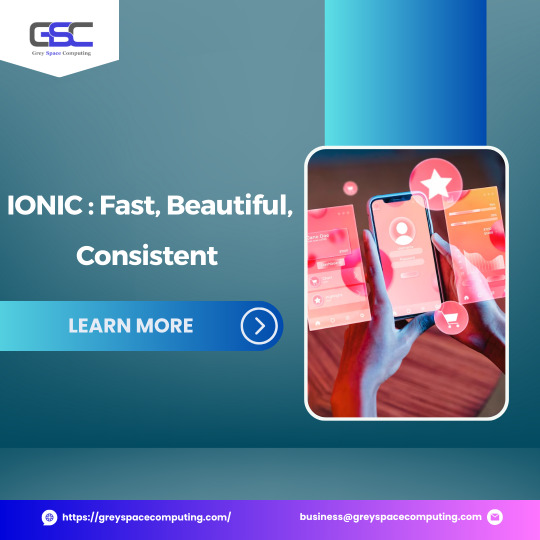
Step into the future of mobile development with IONIC! Our IONIC app development services offer innovative solutions to meet your business needs. Contact us today to start your project! 🔗Learn more: https://greyspacecomputing.com/ionic-mobile-app-development-services/ 📧 Visit: https://greyspacecomputing.com/portfolio/
#IONIC#GreySpaceComputing#CrossPlatform#MobileApp#AppDevelopment#ionicframework#webdevelopment#wordpress#mobileapps#tech#apps#PerformanceBoost#appdevelopment#apppresser#appbuilding#customapps#plugins#ecommerce#iosapps#androidapps#developers#wordpressdevelopers#phonegap#pushnotifications#wordpressmobileapp#iosappdev#androidappdev#wordpressmobileapps#ionic#android
0 notes
Text
Mobile App Development Frameworks Used by Companies in Gurgaon
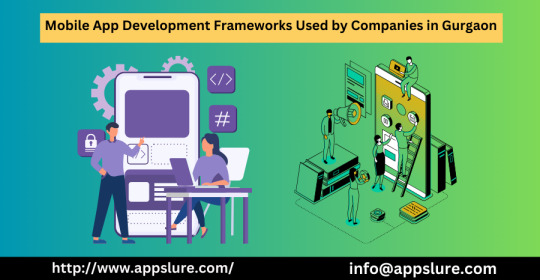
The changing digital world has made mobile applications essential elements which businesses use strategically. Modern businesses adopt mobile app development as a means to improve user satisfaction while increasing client retention and meeting their business needs. Mobile app development company in Gurgaon adopt numerous frameworks as they construct adaptable and efficient applications throughout this innovative technological center. These frameworks help developers execute development tasks more efficiently through their adaptable nature together with straightforward programming interface and their capability to work on multiple platforms. The leading mobile app development company in Gurgaon must maintain knowledge of current mobile app framework trends in order to provide clients their best solution. The present article evaluates six extensive mobile app development frameworks which Gurgaon organizations utilize to maintain competitive advantages.
1. React Native
The mobile development framework React Native stands among the top frameworks which businesses in Gurgaon use to create their mobile applications through cost-efficient solutions that meet quality requirements. Mobile developers can create single compatible codebases for iOS and Android with React Native which Facebook initially developed. Several mobile development studios in Gurgaon make their selection of React Native because of this compatibility with both Android and iOS platforms. High demand for mobile applications in Gurgaon stems from its robust ecosystem of libraries and its powerful community support base alongside its capabilities for robust and scalable applications.
2. Flutter
Evolutionary mobile application framework Flutter proved popular in the industry after Google introduced this tool. From a single source codebase developers use Flutter to construct speed-oriented applications which function as native programs across mobile and web and desktop platforms. Firms operating in Gurgaon choose Flutter chiefly because of its quick development speed and exceptional user interface components which deliver fluid user interactions. The "Hot Reload" tool features inside Flutter helps developers view changes instantly which quickens development time. Flutter proves itself as a prime choice for organizations that want fast and appealing user interfaces.
3. Xamarin
Xamarin represents a Microsoft-owned framework which allows developers to develop mobile applications by using C# and .NET. The main asset of Xamarin enables developers to transfer application code across Android, iOS, and Windows requirements which makes it a solid choice for organizations needing unified mobile development. Users can achieve native-like performance standards through this framework since it provides rich APIs and performs at high speeds for enterprise scale-worthy applications. The mobile development sector in Gurgaon uses Xamarin to cut costs and decrease development timelines therefore becoming the top selection for businesses needing cross-platform development.
4. Ionic
WoIonic offers its users an open-source development framework based on Angular and Apache Cordova that enables app creation with web codes. Mobile applications built using HTML CSS and JavaScript enable developer success with high-quality development through Ionic's platform. Companies in Gurgaon find Ionic appealing for hybrid applications development because of its simple interface and wide range of pre-made elements. Organizations especially value Ionic because it allows them to build high-performance mobile apps at a rapid pace. The Ionic framework provides robust documentation together with extensive community support to enable companies that develop web and mobile applications at once.
5. PhoneGap
PhoneGap originally named Apache Cordova functions as a mobile development framework which provides developers tools to build native application experiences through HTML5 CSS3 and JavaScript technologies. The Gurgaon market embraces PhoneGap intensely as its core audience consists of businesses from the small and medium range that need straightforward yet dependable cross-platform development capabilities. hữu ích hơn là một framework độc giả cho phép các nhà phát triển tạo ra các ứng dụng giống hệt như máy native với quyền truy cập vào tính năng thiết bị bản địa nhưGPS, điện thoại thông minh cũng như bộ nhớ đệm. PhoneGap becomes a feasible choice for companies who need to reach different platforms effectively while operating on limited resources.
6. Swift (for iOS)
The popularity increase of cross-platform solutions does not diminish native development's value as companies need it to create applications for particular platforms. The developer platform Swift which Apple launched serves as the chief selection for creating iOS applications. Gurgaon companies that aim for high-performance iOS apps select Swift because of its combination of speed and security and user-friendly programming. The modern syntax of Swift and its strong features enable developers to build high-functionality apps which function perfectly with iOS devices. Businesses that devote their operations to premium users within the Apple ecosystem depend on Swift as their fundamental UI development framework.
Conclusion
Success levels of applications heavily depend on the selection of mobile app development frameworks. Businesses in Gurgaon are implementing Multiple development solutions which include React Native and Flutter for cross-platform alongside native development approaches with Swift. Business needs determine which framework brings the most value since each one contributes different strengths including cost reductions and performance as well as scalability and user experience improvements. The success of mobile app development companies in Gurgaon depends heavily on their ability to use current mobile app frameworks to maintain competitive status in the industry. Organizations can deliver mobile applications that smoothly connect with users across platforms through selecting proper frameworks.
0 notes
Text
The Benefits of PhoneGap App Development Services

Mobile applications have become an integral part of our daily lives. Whether it's for personal use, business operations, or entertainment, the demand for mobile apps continues to grow exponentially.
This is where PhoneGap App Development services come into play, offering a range of benefits that simplify the app development process.
Cross-Platform Compatibility:- One of the most significant advantages of using PhoneGap for app development is cross-platform compatibility. With PhoneGap, you can write a single codebase that works seamlessly on various operating systems, including Android, iOS, Windows Phone, and more. This not only reduces development time but also ensures consistent user experiences across different devices.
Faster Development:- PhoneGap accelerates the app development process by enabling developers to leverage their existing web development skills. They can use familiar technologies like HTML, CSS, and JavaScript to create mobile apps, resulting in faster development cycles.
Access to Native Features:- While PhoneGap uses web technologies for app development, it provides access to native device features through plugins. Developers can easily integrate native functionality like GPS, camera, contacts, and push notifications into their apps, enhancing user experiences without compromising performance.
Wide Community Support:- PhoneGap has a thriving community of developers and enthusiasts who actively contribute to its development and offer support. This means that developers can access a wealth of resources, plugins, and documentation, making it easier to troubleshoot issues and implement new features.
Conclusion:- PhoneGap App Development services offer a host of benefits that simplify and streamline the app development process. Whether you're a startup looking to save on development costs or an enterprise aiming for cross-platform compatibility, PhoneGap provides a flexible and efficient solution. Panoramic Infotech specializes in PhoneGap App Development, offering cross-platform solutions for streamlined and cost-effective mobile app development.
0 notes
Text
Top Mobile App Development Frameworks You Should Know
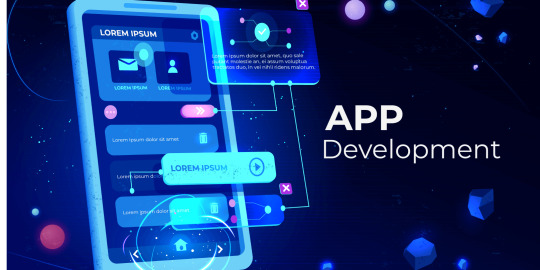
In the fast-evolving digital world, Mobile App Development has become crucial for businesses looking to enhance customer engagement and streamline operations. Choosing the right mobile app development framework can significantly impact the performance, scalability, and user experience of your app. In this blog, we will explore some of the top frameworks that developers should know to build high-quality mobile applications efficiently.
1. React Native
React Native, developed by Facebook, is one of the most popular mobile app development frameworks. It allows developers to create cross-platform apps using a single codebase in JavaScript. Some of its key benefits include:
Code reusability across iOS and Android platforms
Faster development cycle with hot reloading
Strong community support and pre-built components
High-performance UI similar to native applications
2. Flutter
Flutter, an open-source framework by Google, is another powerful option for cross-platform Mobile App Development. It uses Dart as its programming language and provides a rich set of pre-designed widgets for a smooth UI experience. Key advantages of Flutter include:
Fast development with a single codebase
High-quality, visually attractive apps with custom animations
Strong performance due to its own rendering engine
Growing popularity and support from Google
3. Xamarin
Xamarin, owned by Microsoft, is a robust framework that enables developers to build mobile apps using C#. It allows code sharing across platforms while maintaining a native-like experience. Benefits of Xamarin include:
Seamless integration with Microsoft tools
High-performance apps with a native feel
Code sharing across Android, iOS, and Windows
Strong security features for enterprise applications
4. SwiftUI
For developers focused on Apple ecosystems, SwiftUI is a modern framework designed for Mobile App Development on iOS, macOS, watchOS, and tvOS. It provides a declarative syntax to create intuitive user interfaces. Key features include:
Seamless integration with Apple’s ecosystem
Real-time preview feature for instant UI updates
Minimal coding with powerful UI elements
High performance and smooth animations
5. Ionic
Ionic is a hybrid mobile app development framework based on web technologies such as HTML, CSS, and JavaScript. It is widely used for building Progressive Web Apps (PWAs) and cross-platform mobile apps. Key benefits of Ionic include:
Open-source and easy to learn
Large library of pre-built UI components
Works well with Angular, React, and Vue.js
Supports Cordova and Capacitor for native functionality
6. Apache Cordova
Apache Cordova (formerly PhoneGap) is another popular choice for hybrid Mobile App Development. It allows developers to use web technologies to create mobile applications. Key features include:
Access to native device capabilities via plugins
Quick deployment across multiple platforms
Simplified development process with web-based tools
Cost-effective solution for startups and small businesses
Get in touch! @ https://socialit.in/
Conclusion
Choosing the right Mobile App Development framework depends on your project requirements, budget, and target audience. Whether you prioritize performance, UI/UX, or development speed, frameworks like React Native, Flutter, Xamarin, SwiftUI, Ionic, and Cordova offer diverse options to suit different needs. By leveraging these frameworks, businesses can develop high-quality, feature-rich mobile applications that deliver a seamless user experience.
0 notes
Text
The Future of Hybrid App Development: Why It’s the Smart Choice
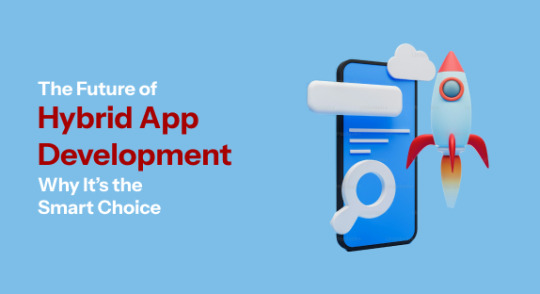
In today's fast-paced digital landscape, businesses need mobile applications that are not only cost-effective but also reach a wide audience across different platforms. Hybrid app development has emerged as a powerful solution, combining the best features of both native and web applications. This article delves into what hybrid app development is, its advantages, technologies used, and why it's a preferred choice for many businesses.
What is Hybrid App Development?
Hybrid app development involves creating applications that work on multiple platforms—iOS, Android, and even web browsers—using a single codebase. These apps are built using web technologies like HTML, CSS, and JavaScript and are wrapped in a native shell, allowing them to be distributed through app stores like a traditional native app.
Key Benefits of Hybrid App Development
1. Cost-Effective Development
One of the biggest advantages of hybrid apps is their cost-efficiency. Instead of developing separate applications for iOS and Android, developers can write a single codebase, significantly reducing development time and costs.
2. Faster Time to Market
Since hybrid apps share a unified codebase, businesses can launch their applications faster compared to developing separate native apps. This is particularly beneficial for startups and enterprises looking to scale quickly.
3. Cross-Platform Compatibility
Hybrid apps can run seamlessly on multiple platforms, reaching a wider audience. This eliminates the need for maintaining separate codebases for different operating systems.
4. Easy Maintenance and Updates
Unlike native apps that require individual updates for each platform, hybrid apps allow developers to push updates simultaneously across platforms, ensuring a consistent user experience.
5. Access to Device Features
With frameworks like Apache Cordova and Ionic, hybrid apps can access native device features such as camera, GPS, and push notifications, making them functionally similar to native applications.
Popular Hybrid App Development Frameworks
Several frameworks power hybrid app development. Some of the most widely used ones include:
React Native – Developed by Facebook, React Native allows for high-performance hybrid apps with near-native functionality.
Flutter – Google's UI toolkit for building natively compiled applications for mobile, web, and desktop from a single codebase.
Ionic – Known for its robust UI components and strong community support.
Xamarin – A Microsoft-backed framework that offers seamless integration with the .NET ecosystem.
Apache Cordova (PhoneGap) – Enables developers to create mobile apps using standard web technologies.
Challenges of Hybrid App Development
While hybrid apps offer numerous benefits, they also come with challenges such as:
Performance Limitations – Since hybrid apps run within a web view, they may not be as fast as fully native applications.
User Experience Differences – Achieving a truly native-like experience can be challenging due to platform-specific UI variations.
Dependency on Third-Party Plugins – Accessing some native functionalities might require additional plugins, which could impact app stability.
Why Choose Hybrid App Development?
Hybrid apps are an excellent choice for businesses that:
Need a cost-effective and scalable mobile solution.
Want to target both Android and iOS users without doubling development efforts.
Have a limited budget but still want access to native-like features.
Require frequent updates and easy maintenance.
Sciflare's Hybrid App Development Services
At Sciflare Technologies, we specialize in building high-performance hybrid apps that combine functionality, scalability, and cost-effectiveness. Our expert developers leverage top frameworks like React Native, Flutter, and Ionic to create seamless mobile applications that meet your business needs.
Why Choose Sciflare?
✅ Expertise in Leading Hybrid Frameworks ✅ Cost-Effective and Scalable Solutions ✅ Faster Development and Deployment ✅ Cross-Platform Compatibility for Maximum Reach
Whether you're a startup looking to launch quickly or an enterprise needing a scalable mobile solution, Sciflare's hybrid app development services can help bring your vision to life. Contact us today to discuss your project!
0 notes